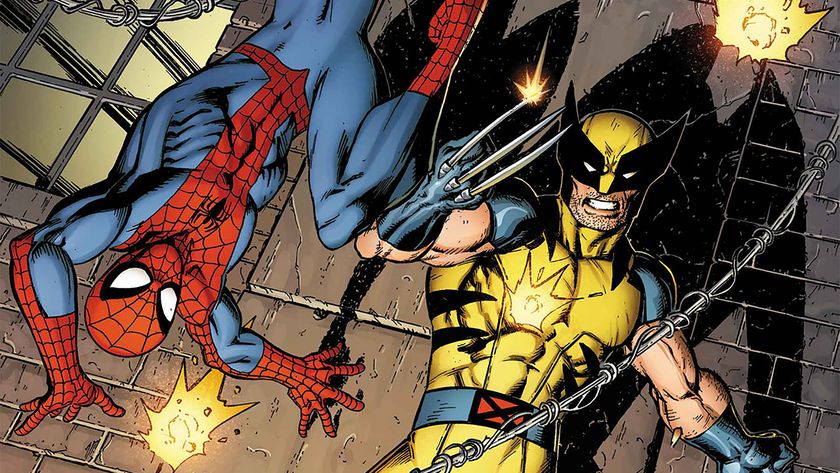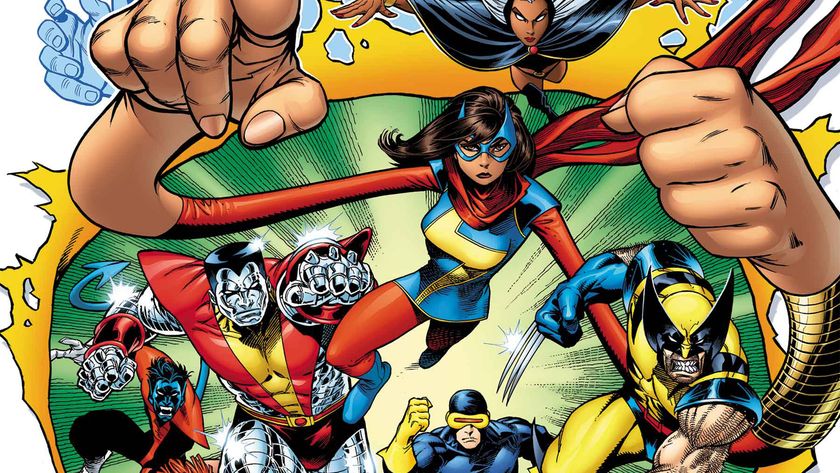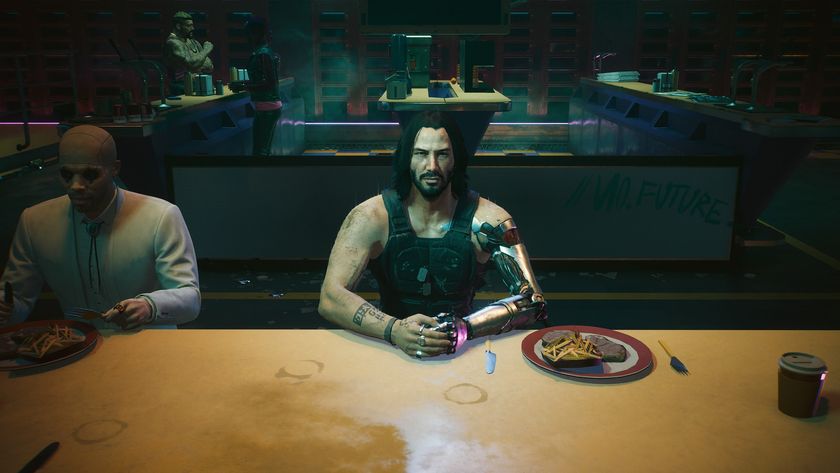Meet the "menacing and beautiful" Original Hulk in Immortal Hulk: Time of Monsters
10,000 years before Bruce Banner, there was the Original Hulk
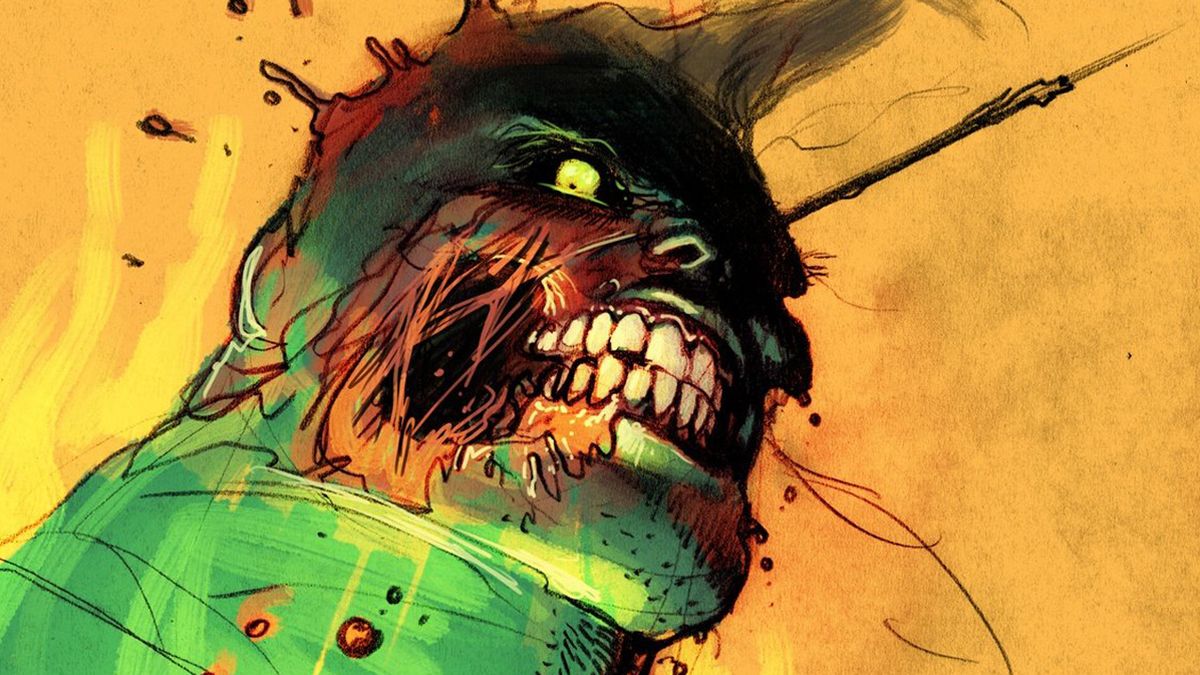
While it's never advisable to make Bruce Banner mad, we have to break some news to him (and you): he wasn't the first Hulk. Not by a long shot.
In the upcoming one-shot Immortal Hulk: Time of Monsters #1, the story of a Hulk that has been lost to the sands of time is being unearthed. This is the story of the Original Hulk.
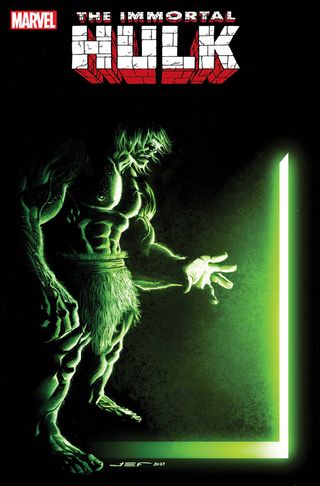
"10,000 years ago, something green and glowing comes to poison the ancient ground of the Fertile Crescent — and the hearts of its people," reads Marvel's description of Immortal Hulk: Time of Monsters #1. "One boy is left to bear the consequences — and, for the first time...to open THE GREEN DOOR."
Long story short, the Green Door is a metaphysical gateway connected to gamma energy that resurrects some unfortunate souls and bonds them with a Hulk. How? Why? It's all the domain of a shadowy force called the One Below All, and they aren't talking.
This story of the first Hulk is being told by writer Alex Paknadel and artist Juan Ferreya, with Immortal Hulk series writer Al Ewing as a co-plotter. Ferreyra is painting this entire story by hand, and Paknadel is digging deep on his own into the gristle of the Hulk mythos.
Newsarama spoke with Paknadel about the upcoming one-shot, and about developing this new Hulk - and what their name is.
Newsarama: Alex, let's get right to it - who is this new Hulk you're introducing in Immortal Hulk: Time of Monsters?
Comic deals, prizes and latest news
Get the best comic news, insights, opinions, analysis and more!
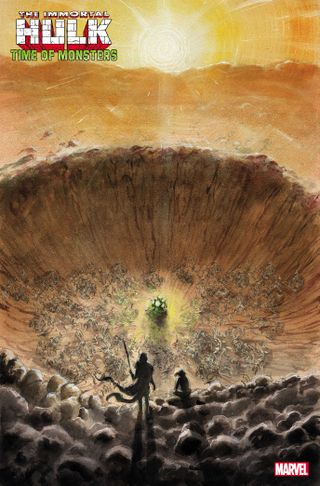
Alex Paknadel: This Hulk Al and I are introducing in Time of Monsters is a young man from a Neolithic village whose elders are trying to embrace agriculture and early cosmopolitanism; however, their efforts are being thwarted by the harsh environment. Their desperation drives them to take extreme measures, which lead directly to the creation of our Hulk. I can't think of a more apposite setting for the story we're telling here.
Nrama: This is not only an early, early Hulk… but Marvel has said substantively that this is the first Hulk, ever. Was it difficult to get the clearance to create and tell this definitive story of what is now the first, ever, ever Hulk?
Paknadel: In terms of difficulty in getting clearance, I don't know what conversations took place internally at Marvel, but our editors Sarah Brunstad and Wil Moss made the process silky smooth at our end. They're as enthusiastic about the project as Al and me, so we were given an awful lot of creative latitude on this one.
Nrama: So where does this Hulk sit in comparison to the one from the 1,000,000 BC era Avengers?
Paknadel: In terms of where this Hulk sits in the canon relative to Vnn, by 'Hulk' we strictly mean 'gamma mutate'. Vnn certainly occupies the Hulk's role/ecological niche in the Avengers of 1,000,000 BC so nothing's been retconned, but his strength isn't derived from the One Below All. Accordingly, we can confidently say that our guy is the first Hulk in Immortal Hulk/Green Door canon, but what future writers and Marvel editorial decide is anybody's guess.
Nrama: Marvel is calling this Hulk 'The Original Hulk.' But does he have a real name in the story?
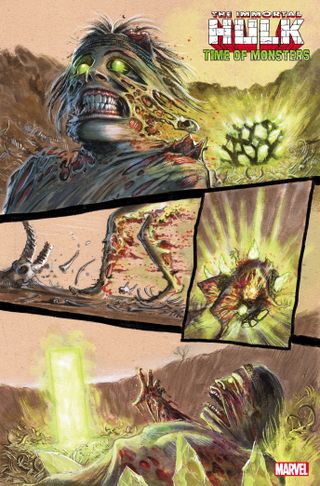
Paknadel: In the script we're calling him 'Ur-Hulk', but that won't appear in the book. He's a force of nature, but he's not a carbon copy of the Banner Hulk. The Ur-Hulk is the first gamma mutate, so he has some other tricks up his sleeve that eagle-eyed readers will recognize instantly.
Nrama: What was the collaboration like between you, Al Ewing, and Marvel to nail this script?
Paknadel: I came to Al with the germ of this idea about six months ago, but it was set in a ruined post-human far future at that point. It clearly piqued his interest because we scheduled a follow-up call to nail the story down and figure out how it could/would dock with Immortal Hulk thematically. It was Al's idea to set it in the distant past, which honestly makes the whole thing that much more resonant in my view.
Once we'd tent pegged the issue out, Al approached Marvel on our behalf and lobbied to get it made. I guess I must have had some goodwill in the tank from my Empyre one-shots last year because Marvel agreed to let me handle the scripting, and then we were off to the races.
Once we had provisional sign-off on the script from Sarah and Wil, I went away and wrote a first draft of the script and handed it to Al for approval. He tweaked a couple of things to make sure it dovetailed with his take and then we submitted it. We got minimal notes back, so the whole process was pretty frictionless from beginning to end.
Nrama: This takes place in the Fertile Crescent around the 8th century B.C., a very historic time. Why here, why then?
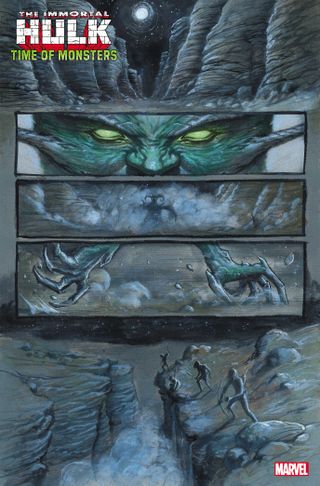
Paknadel: We're at the beginning of the Neolithic here, so we're getting the first permanent settlements in and around the Levant. Agriculture and animal husbandry are becoming things, which means human society as we know it is beginning to take shape.
Now, one of the first things Al and I discussed was our shared belief that the Hulk is in no way antithetical to civilization. The Banner Hulk is closer to a Biblical scapegoat or Georges Bataille's 'accursed share' in the sense that he's the embodiment of 20th and 21st-century militaristic excess – at once the product of a military experiment and an endlessly regenerating target for state-of-the-art weapons (Can you imagine what happens to Stark Unlimited's share price every time there's a Hulk sighting? Or Blackguard's? Wall Street must throw a party.).
So, with our Neolithic Hulk, one of the things we wanted to establish was the proposition that because Hulks are civilization's dark double, it follows that we've had Hulks for as long as we've had civilization.
Nrama: How does this young boy get connected to the Hulk mythos and that frightening Green Door?
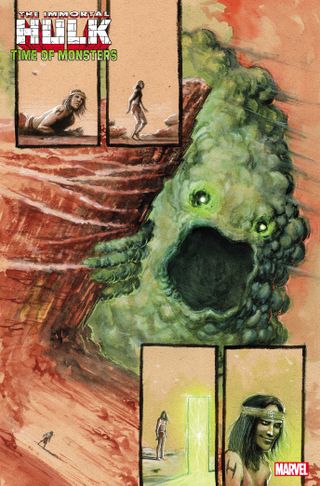
Paknadel: I can't say too much, but we already know that dying is a prerequisite for seeing the Green Door. That means our guy won't be walking through it under pleasant circumstances.
Furthermore, we know the Green Door only opens in the presence of gamma, which is in rather short supply 12,000 years before Ernest Rutherford first split the atom. That means our Hulk is going to have to find a natural source of gamma – no easy feat.
Nrama: You're working on this with artist Juan Ferreyra, who delivered a stunning cover that is a little beyond what we normally expect from him. Is he delivering the same kind of thing in the interior pages?
Paknadel: Juan's a master and I'm thrilled to be working with him. From his work with Paul Tobin on Colder I knew he'd be able to deliver on the horror elements of the book without breaking a sweat, but the real revelation here has been his Ur-Hulk design, which I can confirm does differ quite radically from what you've seen on the cover. There are relatively few surprises in comics because internet, but I hope this one stays under wraps for as long as possible. I think Juan's design is really menacing and beautiful, so I hope we get to see it again.
Nrama: What are your big goals for this one-shot?
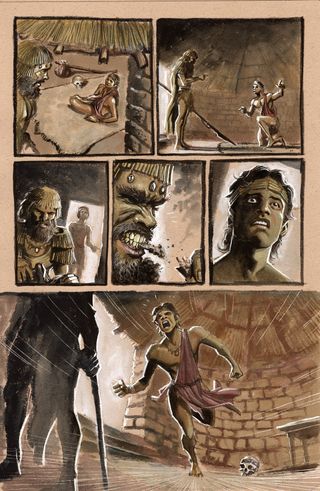
Paknadel: I don't have a big goal beyond telling a compelling story in a novel way, but as his run reaches its climax, I hope readers leave with a greater sense of the depth and vastness of Al's Green Door mythos.
I hope Time of Monsters can be read alongside Al's run and feel like a logical extension of it. Al and I are friends, but I'm a huge fan of this title and I've done my utmost to write something worthy of the name.
Nrama: This story is only so long - could you do more with this new, Original hulk in the future? Do you want to?
Paknadel: I'd love to. There's scope here for big, mythic stories set in the waxing and waning of empires and great civilizations. The gamma continuity Al's established for the Marvel universe is so rich and additive, it's now possible to have any number of historical Hulks as long as certain conditions are met. That's new and extremely exciting to me. I've described the idea of historical Hulks as a 'gimme' elsewhere and I stand by that.
Make sure you've read all the best Hulk stories of all time.
Chris Arrant covered comic book news for Newsarama from 2003 to 2022 (and as editor/senior editor from 2015 to 2022) and has also written for USA Today, Life, Entertainment Weekly, Publisher's Weekly, Marvel Entertainment, TOKYOPOP, AdHouse Books, Cartoon Brew, Bleeding Cool, Comic Shop News, and CBR. He is the author of the book Modern: Masters Cliff Chiang, co-authored Art of Spider-Man Classic, and contributed to Dark Horse/Bedside Press' anthology Pros and (Comic) Cons. He has acted as a judge for the Will Eisner Comic Industry Awards, the Harvey Awards, and the Stan Lee Awards. Chris is a member of the American Library Association's Graphic Novel & Comics Round Table. (He/him)
Most Popular







